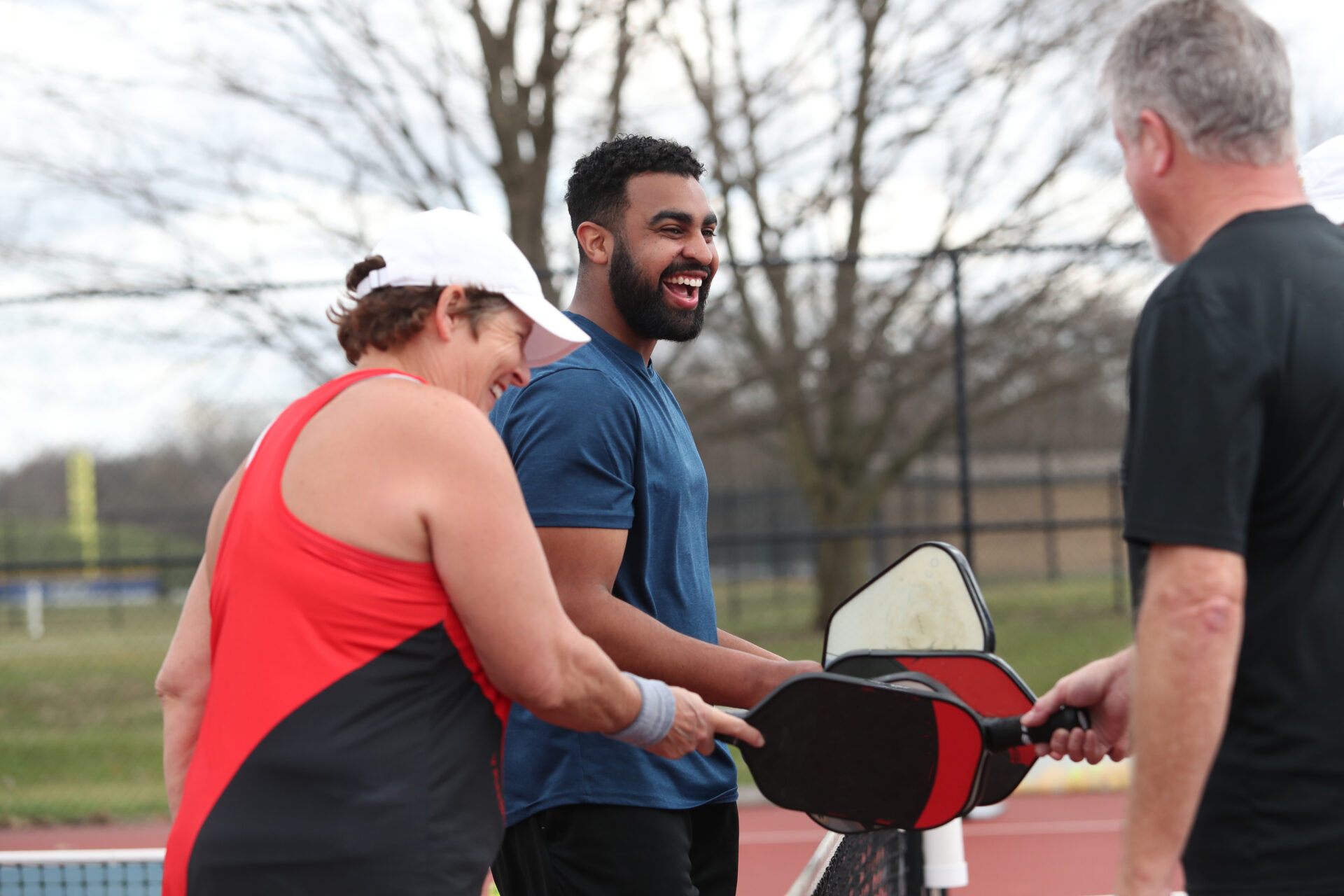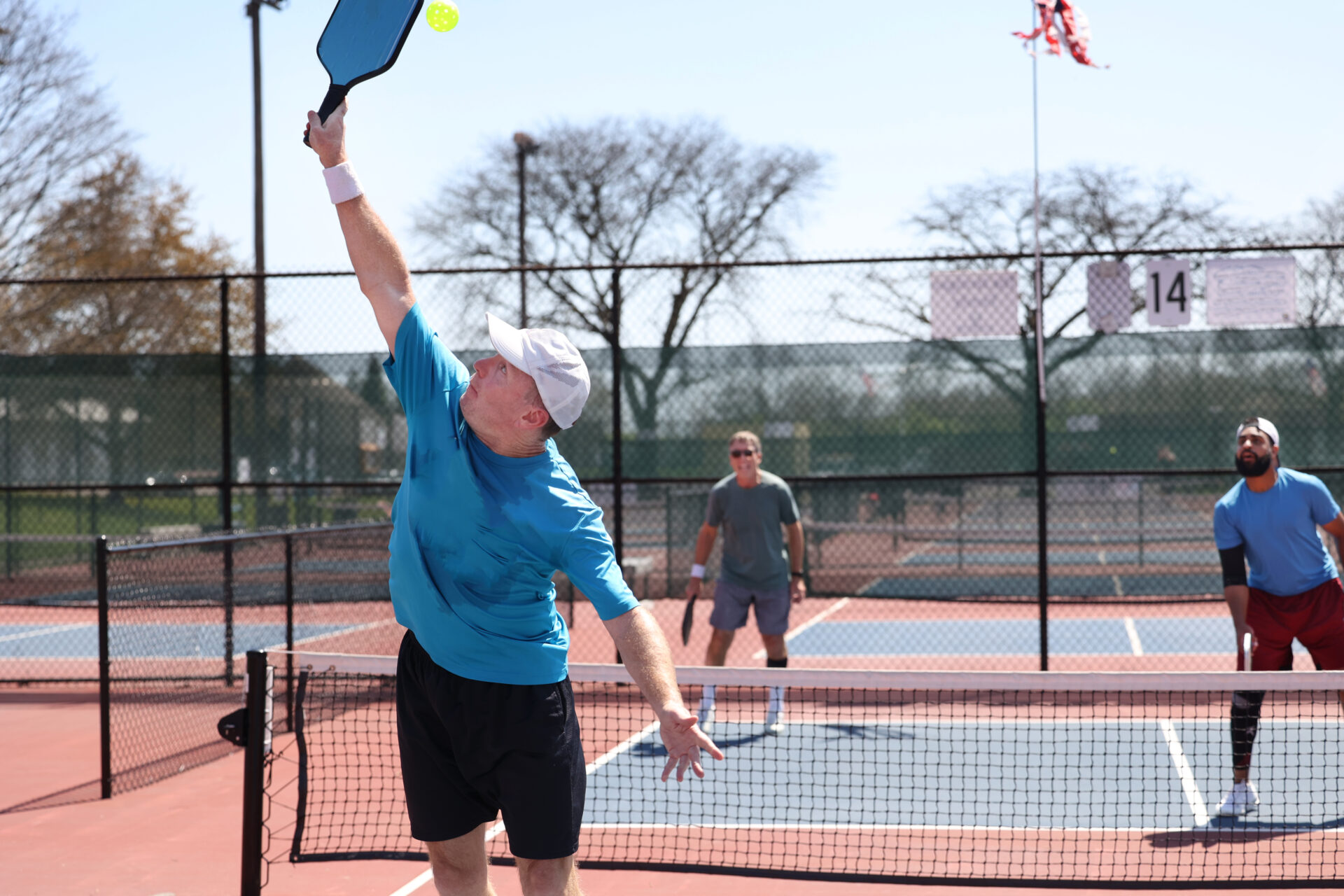Authored by Stacey Gallacher, MD, FAAOS – Expert in Orthopedic Surgery Specializing in Shoulder & Elbow Conditions. The rising popularity of pickleball has increased the number of players who are eager to enjoy this dynamic sport. However, many are unaware of the risks it poses to their shoulder and elbow health. As a board-certified orthopedic surgeon with dual fellowship training in shoulder and elbow as well as trauma, I’m here to guide you through maintaining peak condition and avoiding pickleball injuries.

Understanding Pickleball Injuries – Shoulder and Elbow Injuries
Due to the nature of the game and the repetitive overhead motions involved, individuals who engage in pickleball are frequently susceptible to a range of shoulder and elbow injuries, making it imperative for players to take precautionary measures.
Rotator Cuff Tendinitis and Tears
Rotator cuff tears and tendinitis are common shoulder conditions that are often the result of repetitive overuse and can cause pain and limited range of motion of the shoulder.
Rotator cuff tears refer to the tearing of the tendons of the rotator cuff, which is a group of muscles that surround the shoulder joint, providing stability and allowing for various arm movements. Tendinitis, on the other hand, refers to the inflammation of the tendons in the rotator cuff.
Common symptoms of rotator cuff tears and tendinitis include persistent shoulder pain, weakness in the affected shoulder, difficulty in lifting and reaching, and a clicking or popping sound during movement.

Tennis Elbow and Golfer’s Elbow
Tennis Elbow, also called lateral epicondylitis, and Golfer’s Elbow, also known as Medial Epicondylitis, are overuse injuries that affect the elbow’s outer and inner sides, respectively. Both of these common pickleball injuries can cause pain and loss of grip strength and hinder athletic performance.
- Tennis Elbow occurs when the tendons in the outer part of the elbow become inflamed and tear due to repetitive motion and overuse. This condition can be caused by the repeated gripping and swinging of the pickleball paddle or excessive strain on the forearm muscles.
- Golfer’s Elbow affects the tendons on the inner side of the elbow. Like tennis elbow, this injury is caused by repetitive stress and strain on the muscles and tendons. In pickleball, golfer’s elbow is commonly caused by the repeated motion of hitting backhand shots, which places excessive strain on the wrist flexor muscles.
Both Tennis Elbow and Golfer’s Elbow can be incredibly painful and can significantly hinder pickleball players’ ability to perform at their best. While these injuries are usually associated with their respective sports, they are also prevalent in pickleball due to the repeated and forceful movements required during gameplay.
Identifying the Causes of Pickleball Injuries
Key factors leading to these injuries include:
- Improper Technique – Mastering correct pickleball strokes is essential to reduce strain on joints. To avoid injury due to improper technique while playing pickleball, make sure to properly grip your paddle and swing at an angle with force that doesn’t cause strain to your shoulder or elbow.
- Overuse – Pickleball’s repetitive nature highlights the importance of rest and recovery. After a pickleball match, make sure to engage in “cool down” stretches and ice your muscles.
- Skipping Warm-Ups and Stretches – Essential for preparing your muscles and joints, stretching before playing pickleball will reduce the risk of injury.
- The “Weekend Warrior” – By playing too strenuously without proper lead-up time and experience, you open yourself up to injuries to the elbow and shoulder. In order to avoid this, participate in shorter matches for beginners until you become more experienced. Increase your playing time and difficulty level as you continue to practice the sport over time.

Pickleball Injury Prevention Strategies
Optimizing Technique:
Fine-tuning your playing technique is crucial. Consider lessons from a certified pickleball instructor to demonstrate proper technique and protect your body while enhancing your game.
Strength and Conditioning:
- Shoulder and Elbow Strengthening Exercises – A balanced strengthening program targeting a variety of muscle groups is vital for proper support of the joints and injury prevention.
- Core Strengthening – A strong core helps support many of the body’s movements and activities, minimizing the risk of injury
- Flexibility and Mobility Workout – Incorporating stretching into your daily routine can significantly improve joint health and function.
Pickleball Equipment Considerations:
Selecting the right pickleball gear can profoundly affect your playing experience and lower the risk of injury:
- Pickleball Paddle Selection
- Choose a paddle that properly suits your grip size. If the paddle grip is too big, it can lead to difficulties in maneuvering and controlling the ball, while a grip that is too small can cause discomfort and strain in your hand. Therefore, finding a paddle that fits perfectly in your hand and allows for a natural and comfortable grip is essential to avoid any unnecessary arm strain during gameplay.
- Another important aspect that can greatly affect not only your performance but also the strain on your arm muscles is the weight of the paddle. A paddle that is too heavy will require more effort to swing and maneuver, resulting in fatigue and strain on your arm, while a paddle that is too light may lack power and control, forcing you to exert more force to compensate.
- Finding a paddle that matches your weight preferences is crucial for minimizing arm strain and maximizing your overall performance on the court.
- Stability Footwear
- Stability footwear plays a crucial role in court sports by providing much-needed support and reducing the likelihood of slips and falls. When engaging in pickleball and related activities, players tend to make rapid movements, change directions frequently, and put immense pressure on their lower body. As a result, the risk of injuries becomes considerably higher.
- However, with stability shoes, athletes can feel confident in their movements, as these specialized shoes offer enhanced stability and traction. They typically feature supportive structures such as reinforced soles, midfoot support, and ankle stabilization technology. By effectively distributing the pressure and supporting the feet, stability footwear helps athletes maintain balance and reduces the risk of accidents.

When to Seek Medical Attention for Pickleball Injuries
If you’re experiencing persistent pain or mobility issues, it’s imperative that you schedule a consultation with a healthcare provider as soon as possible. As a board-certified orthopedic specialist in shoulder and elbow care proudly serving at the Advanced Orthopedics and Sports Medicine Institute, I’m committed to providing comprehensive care tailored to the unique needs of pickleball players.
New onset of pain, weakness, or loss of joint mobility should be evaluated, especially if this persists beyond 1-2 weeks and is not resolved with simple home remedies (rest, ice, over-the-counter medications). Even with the best prevention strategies in place, unexpected injuries can occur. Any sudden onset of pain or decreased function of the elbow or shoulder after an injury should be evaluated promptly.
Schedule a Consultation With the Team of Shoulder & Elbow Specialists at AOSMI in New Jersey
My objective is to ensure your pickleball experience is both enjoyable and free from injury. Adhering to these preventative strategies can safeguard your play and lower your risk for injury, but there is no risk-free approach to playing pickleball. For personalized orthopedic care, contact or schedule an appointment online with the team of shoulder and elbow specialists at AOSMI. We have locations across New Jersey that will help keep you in top form for pickleball this season and beyond.







